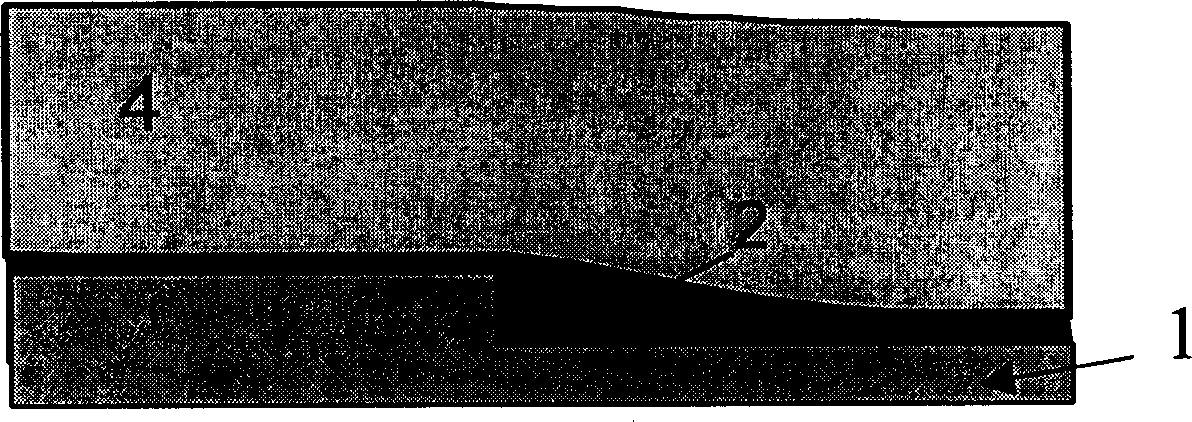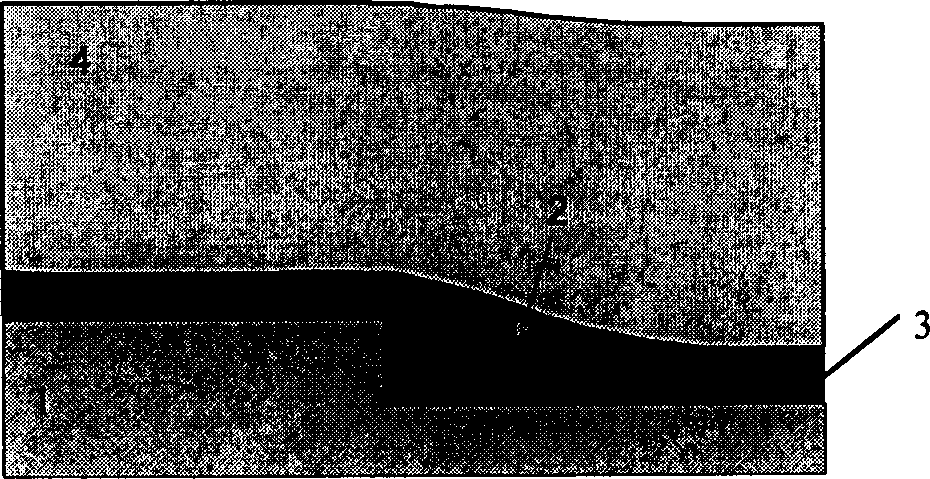Novel button anti-reflection film structure
A bottom anti-reflection, thin-film structure technology, which is applied in the photoengraving process, optics, instruments, etc. of the patterned surface, can solve the problem of poor process stability of process development, changes in the thickness of photoresist on the surface of silicon wafers, and depth of field during photolithography. impact, etc.
- Summary
- Abstract
- Description
- Claims
- Application Information
AI Technical Summary
Problems solved by technology
Method used
Image
Examples
Embodiment Construction
[0014] The implementation process of the present invention is:
[0015] 1. Use PECVD to deposit inorganic BARC (such as SiON) on the surface of the silicon wafer with a thickness of about 35nm;
[0016] 2. Use the spin-on method to coat organic BARC on the surface of the silicon wafer, such as the products of Clariant or Shipley; the thickness is about 100nm. That is, a composite reflective film structure with good performance is obtained.
[0017] 3. Then apply photoresist on the surface of organic BARC; and complete photolithography and complete etching.
[0018] The composite anti-reflection film improves the quality of photolithography, reduces the line width loss of traditional etching, and improves the process stability.
PUM
| Property | Measurement | Unit |
|---|---|---|
| thickness | aaaaa | aaaaa |
| thickness | aaaaa | aaaaa |
| thickness | aaaaa | aaaaa |
Abstract
Description
Claims
Application Information
 Login to View More
Login to View More - R&D
- Intellectual Property
- Life Sciences
- Materials
- Tech Scout
- Unparalleled Data Quality
- Higher Quality Content
- 60% Fewer Hallucinations
Browse by: Latest US Patents, China's latest patents, Technical Efficacy Thesaurus, Application Domain, Technology Topic, Popular Technical Reports.
© 2025 PatSnap. All rights reserved.Legal|Privacy policy|Modern Slavery Act Transparency Statement|Sitemap|About US| Contact US: help@patsnap.com



